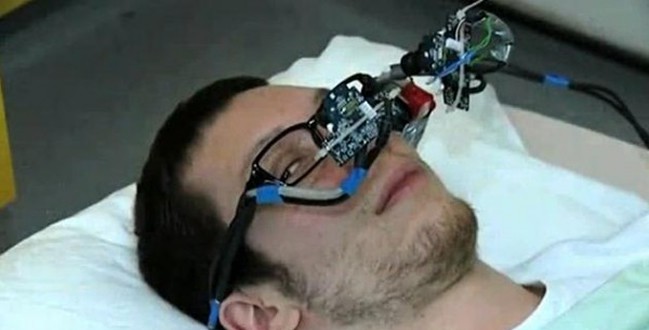![]()
An interesting new interaction device has appeared on the market – the GT3D. Worn like a normal pair of sunglasses, the GT3D registers the movement of the eyes to control the mouse cursor on a computer screen. The device has been developed by researchers at the Imperial College of London, and its objective is to enable users with physically debilitating conditions such as muscular dystrophy, Parkinson’s disease, multiple sclerosis, and spinal cord injuries to use a computer, send emails and search the internet efficiently and comfortably.
How the GT3D works
The GT3D was developed using off-the-shelf materials, that cost only around $60. In fact, the goal was to produce a user-friendly control unit that was affordable for everyone, which, instead of involving altogether new technology, piggy-backed on existing technology. This means that should the device be developed for commercial use, its retail price will likely be quite low, thus making it more accessible to users who need it.
The functionality of the GT3D is made possible using an eye tracking device consisting of two cameras from a video game console that are attached to a pair of glasses just outside of the wearer’s field of vision. The cameras continually photograph the eyeball, using the pupil as their point of reference. The extent of the pupil’s movement from its centre view is then calibrated with the computer screen.

The device also incorporates an improved method of ‘mouse clicking’ by way of a wink of the eye. Previously, blinking had been used, but this has proved to be unviable as blinking is involuntary and occurs naturally, whereas winking does not. What’s more is that this device uses just a single watt of power and can transmit information using WiFi or via a USB cable to any computer that uses Windows or Linux operating systems.
The eye tracking technology of the GT3D has further implications, as researchers are modifying it to be able to determine where exactly a person is looking, not only in terms of direction, but also at what point in the depth of one’s view the subject is focusing on. The applications for this technology extend beyond interaction with computer screens. For instance, wheelchairs may be steered by their users by simply looking at the direction where they want to go.
Coordination Testing through video gaming
The effectiveness of the GT3D eye tracker was demonstrated by having volunteers play Pong – a game which demands an intermediate level of coordination. Pong involves hitting a ball with a bat as it bounces around the screen. Users were observed to obtain a level of proficiency in very little time, reaching a level on par with more experienced users in just a few hours.
The Future of the GT3D
Currently, the GT3D enables users to browse the web and check their e-mails “hands-free”. Although these can be considered as being small tasks, the technology has a huge potential.
Commenting on the GT3D project, Dr. Aldo Faisal, Lecturer in Neurotechnology at Imperial College London’s Department of Bioengineering and the Department of Computing, stated that “Crucially, we have achieved two things: we have built a 3D eye tracking system hundreds of times cheaper than commercial systems and used it to build a real-time brain machine interface that allows patients to interact more smoothly and more quickly than existing invasive technologies that are tens of thousands of times more expensive. This is frugal innovation; developing smarter software and piggy-backing existing hardware to create devices that can help people worldwide independent of their healthcare circumstances.”
Want to learn more?
If you’d like to brush up on Accessibility and get industry-relevant skills, then consider to take the online course on Accessibility. This will earn you an industry-recognized Course Certificate that can advance your career. If, on the other hand, you want to go over the basics of UX and Usability, you could take the online course on User Experience. Good luck on your learning journey!
